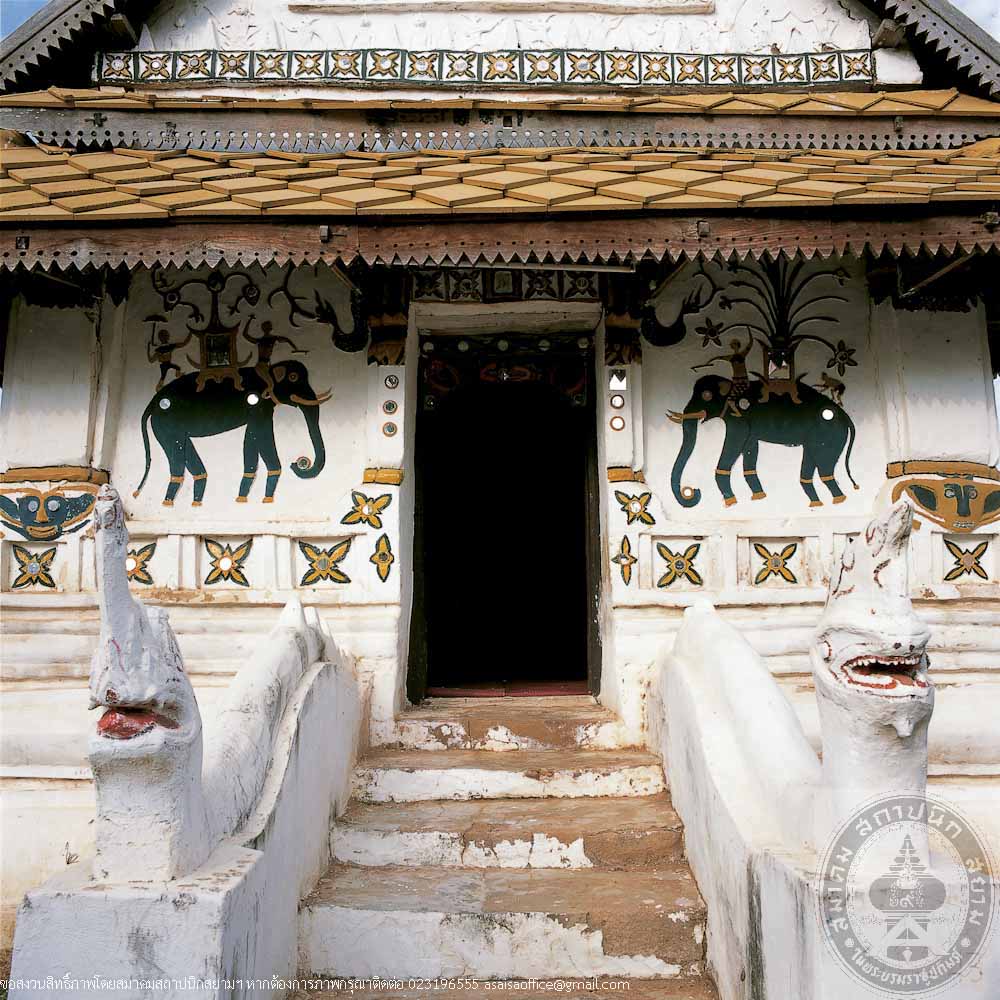สิมวัดสระทอง
สิมวัดสระทอง
ที่ตั้ง วัดสระทอง 127 บ้านบัว อำเภอมัญจาคีรี จังหวัดขอนแก่น
สถาปนิก/ผู้ออกแบบ -
ผู้ครอบครอง วัดสระทอง
ปีที่สร้าง ประมาณปี พ.ศ. 2375
ปีที่ได้รับรางวัล พ.ศ. 2544
ประวัติ
สิมวัดสระทอง เป็นสถาปัตยกรรมพื้นถิ่นอีสาน มีลักษณะเป็นสิมทึบ หลังคา 2 ชั้น ชั้นบนเป็นจั่ว ชั้นล่างเป็นปีกนกโดยรอบ ที่น่าสนใจคือการประดับตกแต่งด้วยปูนปั้นฝีมือชาวบ้านเป็นภาพนูนต่ำทาสีที่ผนังภายนอก เป็นภาพคนขี่ช้าง คนขี่ม้า คนในอิริยาบถต่างๆ และลวดลายเช่นลายดอกไม้ ลายดาว ฯลฯ ภาพเหล่านี้ดูซื่อและ มีชีวิตชีวา แสดงออกถึงความรู้สึกของศิลปินผู้สร้างสรรค์อย่างบริสุทธิ์ใจ นับเป็นเอกลักษณ์ของอาคารนี้
บ้านบัวก่อตั้งขึ้นประมาณปี พ.ศ. 2375 โดยพ่อใหญ่ขุนสีวอ พ่อใหญ่โคตรวงศ์ พ่อใหญ่โคตะ พ่อใหญ่กุนและพ่อใหญ่แป ซึ่งอพยพมาจากบ้านโนนเค้า มาตั้งบ้านอยู่ริมหนองน้ำและตั้งชื่อหมู่บ้านว่า “บ้านบัว” พร้อมกันนั้นได้สร้างวัดขึ้น ให้ชื่อว่า “วัดสระทอง”
สิมหลังนี้ได้บูรณะขึ้นด้วยความร่วมแรงร่วมใจของชาวบ้านบัว ในปี 2543 นับเป็นตัวอย่างของการอนุรักษ์สถาปัตยกรรมโดยชุมชน ซึ่งมีคุณค่ายิ่งทั้งในด้านประวัติศาสตร์และด้านจิตใจ

สิมวัดสระทอง

สิมวัดสระทอง
-

สิมวัดสระทอง
-

สิมวัดสระทอง
Sim, Wat Sa Thong
Location Wat Sa Thong, 127 Ban Bua, Amphoe Manchakhiri, Khon khaen Province
Architect/Designer -
Proprietor Wat Sa Thong
Date of Construction circa 1832 AD.
Conservation Awarded 2001 AD.
History
Sim at Wat Sa Thong is a locan Isan architecture. The building is an enclosed type with gable roof and a hipped lower tier. The exterior walls are decorated with painted bas-reliefs which depict people in different postures i.e.riding an elephant, riding a horse, standing, as well as some designs such as flowers,stars, etc. These reliefs look very sincere and lively,with local craftmanship that expresses the artists’feeling in pure from, the uniqe feature of this building.
Wat Sa Thong was built along with the founding of Ban Bua village circa 1832 AD. b a group of people who immigrated from Ban Non Khao, led by Pho Yai Khun Siwo, Pho Yai Khotwong, Pho Yai Khota, Pho Yai Kun, and Pho Yai Pae. The temple has been well-maintained and in 2000, the local people have collaborated in its restoration, a very impressive example of conservation by the community that not only help preserve the building physically, but also preserves and promotes sense of unity and cultural aeareness.